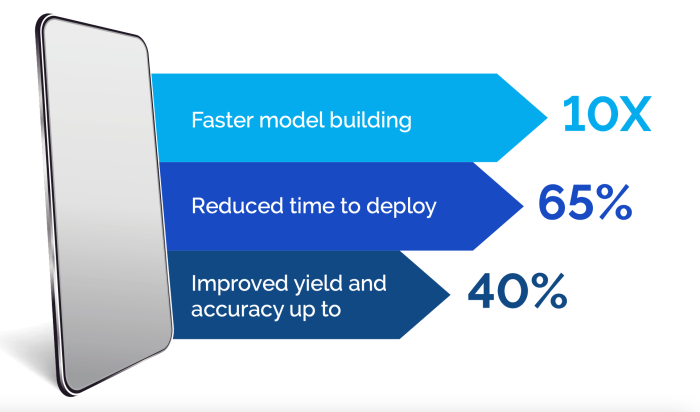Computer vision software development company – The field of computer vision is rapidly evolving, driving innovation across numerous industries. This comprehensive guide delves into the world of computer vision software development companies, exploring their roles, the technologies they employ, and the impact they have on our world. We’ll cover everything from the core technologies to the challenges faced and the future of this exciting sector.
Understanding Computer Vision Software Development
Computer vision software development focuses on creating algorithms and systems that enable computers to “see” and interpret images and videos in a way similar to humans. This involves a complex interplay of various technologies, including:
Core Technologies in Computer Vision Software Development, Computer vision software development company
- Image Acquisition: This initial step involves capturing images or videos using cameras, scanners, or other imaging devices. The quality of the acquired data significantly impacts the accuracy of subsequent processing.
- Image Processing: This stage involves enhancing the image quality, reducing noise, and performing transformations to prepare the data for analysis. Techniques like filtering, segmentation, and feature extraction are commonly used.
- Deep Learning and Machine Learning: These powerful techniques, particularly deep learning using convolutional neural networks (CNNs), are central to modern computer vision. They enable the development of sophisticated algorithms for object detection, image classification, and scene understanding.
- Object Detection and Recognition: This crucial aspect involves identifying and classifying objects within an image or video. Algorithms are trained to recognize specific objects, such as faces, vehicles, or products.
- Image Segmentation: This technique involves partitioning an image into meaningful regions based on their characteristics. It’s crucial for tasks such as medical image analysis and autonomous driving.
- 3D Computer Vision: This advanced area deals with understanding three-dimensional scenes from images or videos, enabling applications like augmented reality (AR) and robotics.
Types of Computer Vision Software Development Companies
Computer vision software development companies come in various shapes and sizes, catering to different needs and industries. Some common types include:
- Specialized Computer Vision Companies: These companies focus solely on computer vision technologies, offering a range of services and solutions.
- AI and Machine Learning Companies: Many broader AI companies incorporate computer vision as a key component of their offerings.
- Industry-Specific Companies: Some companies specialize in applying computer vision to specific sectors, such as healthcare, automotive, or manufacturing.
- Consultancy Firms: These firms provide expert advice and assistance to companies looking to integrate computer vision into their operations.
The Role of Computer Vision Software Development Companies
These companies play a crucial role in bridging the gap between cutting-edge research and real-world applications. Their services often include:
- Custom Software Development: Creating tailored computer vision solutions to meet specific client needs.
- Data Acquisition and Annotation: Gathering and labeling the large datasets necessary for training machine learning models.
- Model Training and Optimization: Developing and fine-tuning computer vision models to achieve high accuracy and performance.
- Integration with Existing Systems: Seamlessly incorporating computer vision solutions into clients’ existing workflows and infrastructure.
- Deployment and Maintenance: Ensuring the reliable and efficient operation of deployed computer vision systems.
Challenges in Computer Vision Software Development: Computer Vision Software Development Company
Despite the rapid advancements, several challenges remain in computer vision software development:
- Data Requirements: Training accurate models requires vast amounts of high-quality labeled data, which can be expensive and time-consuming to acquire.
- Computational Resources: Training complex deep learning models demands significant computational power, often requiring specialized hardware like GPUs.
- Generalization and Robustness: Models need to be robust enough to handle variations in lighting, viewpoint, and other factors, ensuring reliable performance in real-world scenarios.
- Ethical Considerations: The use of computer vision raises ethical concerns related to privacy, bias, and potential misuse.
The Future of Computer Vision Software Development
The future of computer vision is bright, with ongoing research and development pushing the boundaries of what’s possible. We can expect to see:
- Increased Automation: Further automation in data annotation and model training will improve efficiency and reduce costs.
- More Robust and Generalizable Models: Advancements in deep learning will lead to models that are more robust to variations in real-world conditions.
- Edge Computing: Processing images and videos directly on edge devices (e.g., smartphones, cameras) will reduce latency and bandwidth requirements.
- Wider Adoption Across Industries: Computer vision will continue to transform industries such as healthcare, manufacturing, and autonomous driving.
Frequently Asked Questions (FAQ)
- Q: What are the key applications of computer vision?
A: Computer vision is used in various applications, including medical image analysis, autonomous vehicles, facial recognition, object detection in security systems, robotics, and industrial automation. - Q: How much does it cost to develop a computer vision system?
A: The cost varies greatly depending on the complexity of the system, the required data, and the level of customization. It can range from thousands to millions of dollars. - Q: What skills are needed to become a computer vision developer?
A: Strong programming skills (Python is commonly used), knowledge of machine learning and deep learning algorithms, experience with image processing libraries (like OpenCV), and understanding of computer vision concepts are essential. - Q: What are the ethical considerations of computer vision?
A: Ethical considerations include potential biases in algorithms, privacy concerns related to facial recognition, and the responsible use of computer vision in security and surveillance applications.
References
Call to Action
Are you ready to leverage the power of computer vision for your business? Contact us today to discuss your needs and explore how our expertise can help you achieve your goals.
Commonly Asked Questions
What are the typical career paths within a computer vision software development company?

Source: integrasources.com
Common roles include software engineers, data scientists, machine learning engineers, computer vision researchers, and project managers. Opportunities exist for specialization in areas like image processing, object detection, or 3D vision.
What types of clients do these companies typically serve?
Clients span diverse industries, including automotive, healthcare, manufacturing, security, and retail. They range from large corporations to smaller startups seeking to integrate computer vision into their products or services.
How much does it typically cost to develop a computer vision application?
The cost varies greatly depending on complexity, scope, and the level of customization required. Factors such as data acquisition, model training, and integration with existing systems all contribute to the overall expense.
What are some of the ethical considerations surrounding computer vision technology?

Source: landing.ai
Ethical concerns include bias in algorithms, privacy implications, and the potential for misuse. Responsible development practices and rigorous testing are crucial to mitigate these risks.
